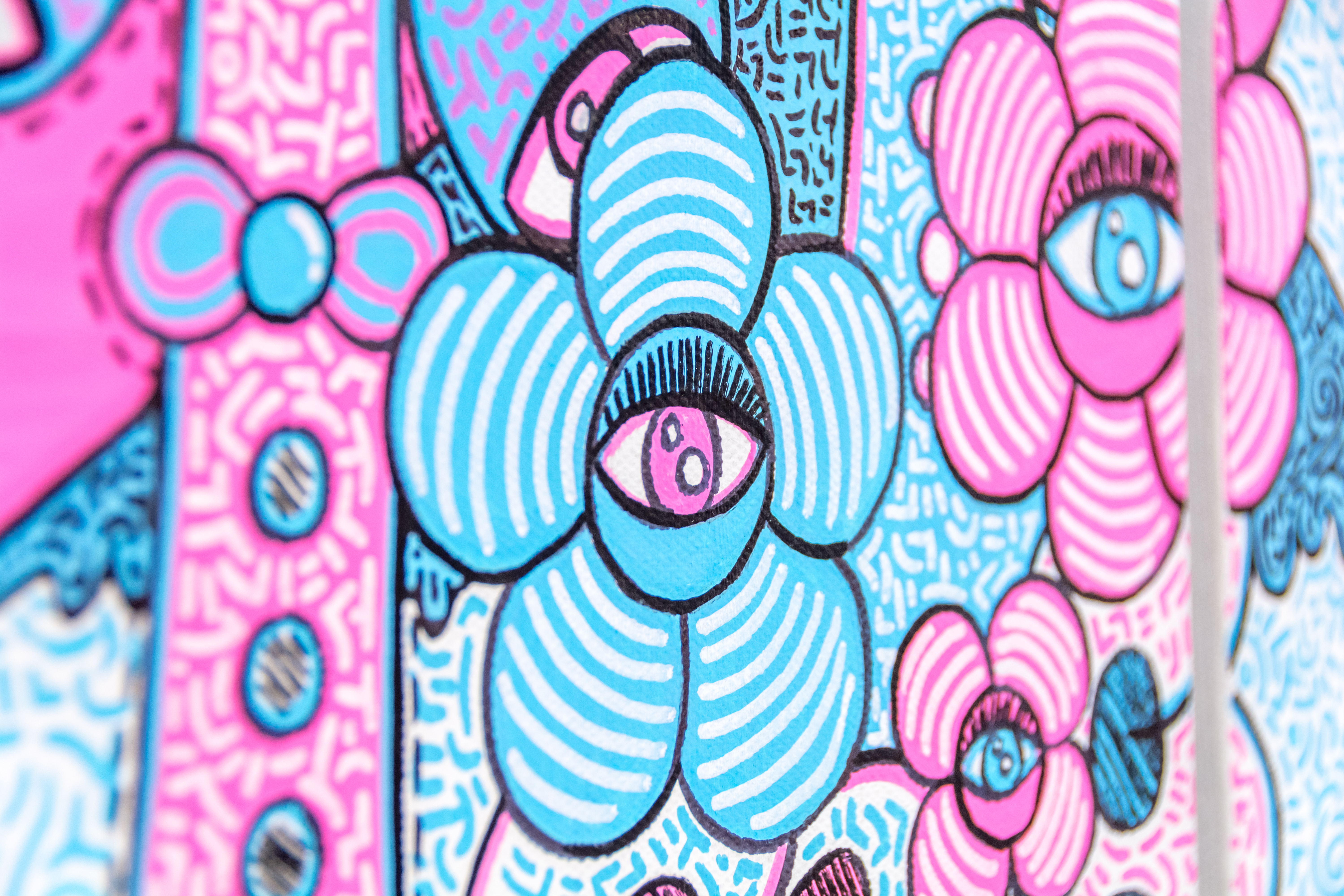
Jack Chen
Samsara
Samsara
My studio practice is based around revisioning and deconstructing an empty world left by the pandemic in order to assemble a fabricated world of my own that touches on subjects of birth, life and death. Within this world I have created characters that morph mythological references with twists of my own. My graphic language and psychedelic colour palette incorporate personal patterns that symbolise movement across time and place.
My interest in stages of life and the natural world has led me to view the life of living beings as a part of a cycle much like recycling where the deceased become compost and return to nurture the life they originated from.
My studio practice concerns themes of growth and progress, specifically how a living being matures through the coming-of-age process, when adult realities collide with dreamlike youth. During lockdowns, I explored various techniques of digital drawing, photoshopping, 3D modelling and frame by frame animation and applied these to ideas related to growth, maturity, and feelings of isolation. I later converted my digital experiments in the physical studio where I painted graphic works on canvas steeped in psychedelic colours. Extracting, rebuilding, and reimagining characters and social constructs I have observed during the pandemic has offered me a means of reflecting on the relationship between humans and nature.
My character creations originate in simple doodles. I then group them on a chart according to their scale and size in relation to each other and structures recognisable from the real word. The creatures or characters interact in a human-like manner, while viewers of the works are positioned as 'aliens' observing these 'others'. The chunky canvas stretchers allow the work to emerge off the wall towards the viewer as opposed to the viewer diving in toward the work.
My fabricated 'others' reference certain mythological beings disguised in modern form. These characters represent authority figures like 'Sendan Kendatsuba' who is part a Japanese painting scheme that depicts deities banishing evil. Other references include 'Cerberus' from Greek mythology who guards the Underworld to prevent the dead from leaving. I have given him the new role of welcoming the dead. The use of 'cute' and 'creepy' characters with bright colors and the atomic bombings and religious imagery responds to the work of the great contemporary Japanese ‘Superflat’ artist, Takashi Murakami.
The hierarchies established between the characters within my fabricated world mimic a real world social ladder. The characters contribute to important ideas about the function of extermination and processes of decomposition that these works are concerned with. The possibility of an afterlife is presented and functioning within the visual work as a reprocessing of living life. Living beings like plants, breed, grow and later die. These deceased bodies become a compost to what once gave birth to them that alludes to the recycling process. My interests in the construction and development of society, social hierarchy and the ways in which foreigners are regarded as another species have been informed by my interest in Japanese Edo period art.




